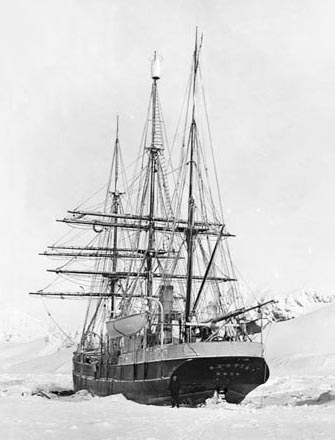|
Sheila Cove
Sheila Cove () is a cove in the southwest part of Jessie Bay on the north coast of Laurie Island, in the South Orkney Islands. Surveyed and named by the Scottish National Antarctic Expedition, 1902–04, for Sheila Bruce, daughter of William S. Bruce William Speirs Bruce (1 August 1867 – 28 October 1921) was a British naturalist, polar scientist and oceanographer who organized and led the Scottish National Antarctic Expedition (SNAE, 1902–04) to the South Orkney Islands and the Wedde ..., leader of the expedition. References Coves of Antarctica {{SouthOrkneys-geo-stub ... [...More Info...] [...Related Items...] OR: [Wikipedia] [Google] [Baidu] |
Jessie Bay
Jessie Bay () is a bay wide, lying between Mackenzie Peninsula and Pirie Peninsula, on the north side of Laurie Island in the South Orkney Islands. Apparently seen in the course of the joint cruise by Captain George Powell, a British sealer, and Captain Nathaniel Palmer, an American one. In 1821, it was roughly charted by Captain James Weddell, a British sealer. It was surveyed in 1903 by the Scottish National Antarctic Expedition of William S. Bruce, who named this bay for his wife, Jessie Mackenzie Bruce. He also named a cove in the bay, Sheila Cove, for his daughter. See also *Expedition Rock Expedition Rock () is a submerged rock east-northeast of Cape Robertson, lying in the entrance to Jessie Bay on the north side of Laurie Island, in the South Orkney Islands. It was charted by Petter Sorlle, 1912–15, and called "Aagot Gr"; it ... References Laurie Island Bays of the South Orkney Islands {{SouthOrkneys-geo-stub ... [...More Info...] [...Related Items...] OR: [Wikipedia] [Google] [Baidu] |
Laurie Island
Laurie Island is the second largest of the South Orkney Islands. The island is claimed by both Argentina as part of Argentine Antarctica, and the United Kingdom as part of the British Antarctic Territory. However, under the Antarctic Treaty System all sovereignty claims are frozen, as the island lies south of the parallel 60°. Buchanan Point at the north-eastern end of the island, with Cape Whitson on its south coast, are Important Bird Areas. History Laurie Island was discovered by Captains George Powell and Nathaniel Palmer in the course of their 1821 expedition to the South Atlantic. Richard Holmes Laurie used Powell's observations to create a map of the island, and subsequently, the island was named after him. Two years later, James Weddell mapped the island for the second time, though his charts turned out to be much less accurate than Powell's charts. Weddell attempted to rename the island to Melville Island for the 2nd Viscount Melville, but the name failed to stick ... [...More Info...] [...Related Items...] OR: [Wikipedia] [Google] [Baidu] |
South Orkney Islands
The South Orkney Islands are a group of islands in the Southern Ocean, about north-east of the tip of the Antarctic Peninsula''Antarctica: Secrets of the Southern Continent'' p. 122 David McGonigal, 2009 and south-west of . They have a total area of about . The islands are claimed both by Britain (as part of the since 1962, previously as a [...More Info...] [...Related Items...] OR: [Wikipedia] [Google] [Baidu] |
Scottish National Antarctic Expedition
The Scottish National Antarctic Expedition (SNAE), 1902–1904, was organised and led by William Speirs Bruce, a natural scientist and former medical student from the University of Edinburgh. Although overshadowed in terms of prestige by Robert Falcon Scott's concurrent Discovery Expedition, the SNAE completed a full programme of exploration and scientific work. Its achievements included the establishment of a staffed meteorological station, the first in Antarctic territory, and the discovery of new land to the east of the Weddell Sea. Its large collection of biological and geological specimens, together with those from Bruce's earlier travels, led to the establishment of the Scottish Oceanographical Laboratory in 1906. Bruce had spent most of the 1890s engaged on expeditions to the Antarctic and Arctic regions, and by 1899 was Britain's most experienced polar scientist. In March of that year, he applied to join the Discovery Expedition; however, his proposal to extend that e ... [...More Info...] [...Related Items...] OR: [Wikipedia] [Google] [Baidu] |
William S
William is a male given name of Germanic origin.Hanks, Hardcastle and Hodges, ''Oxford Dictionary of First Names'', Oxford University Press, 2nd edition, , p. 276. It became very popular in the English language after the Norman conquest of England in 1066,All Things William"Meaning & Origin of the Name"/ref> and remained so throughout the Middle Ages and into the modern era. It is sometimes abbreviated "Wm." Shortened familiar versions in English include Will, Wills, Willy, Willie, Bill, and Billy. A common Irish form is Liam. Scottish diminutives include Wull, Willie or Wullie (as in Oor Wullie or the play ''Douglas''). Female forms are Willa, Willemina, Wilma and Wilhelmina. Etymology William is related to the given name ''Wilhelm'' (cf. Proto-Germanic ᚹᛁᛚᛃᚨᚺᛖᛚᛗᚨᛉ, ''*Wiljahelmaz'' > German ''Wilhelm'' and Old Norse ᚢᛁᛚᛋᛅᚼᛅᛚᛘᛅᛋ, ''Vilhjálmr''). By regular sound changes, the native, inherited English form of the name shoul ... [...More Info...] [...Related Items...] OR: [Wikipedia] [Google] [Baidu] |


